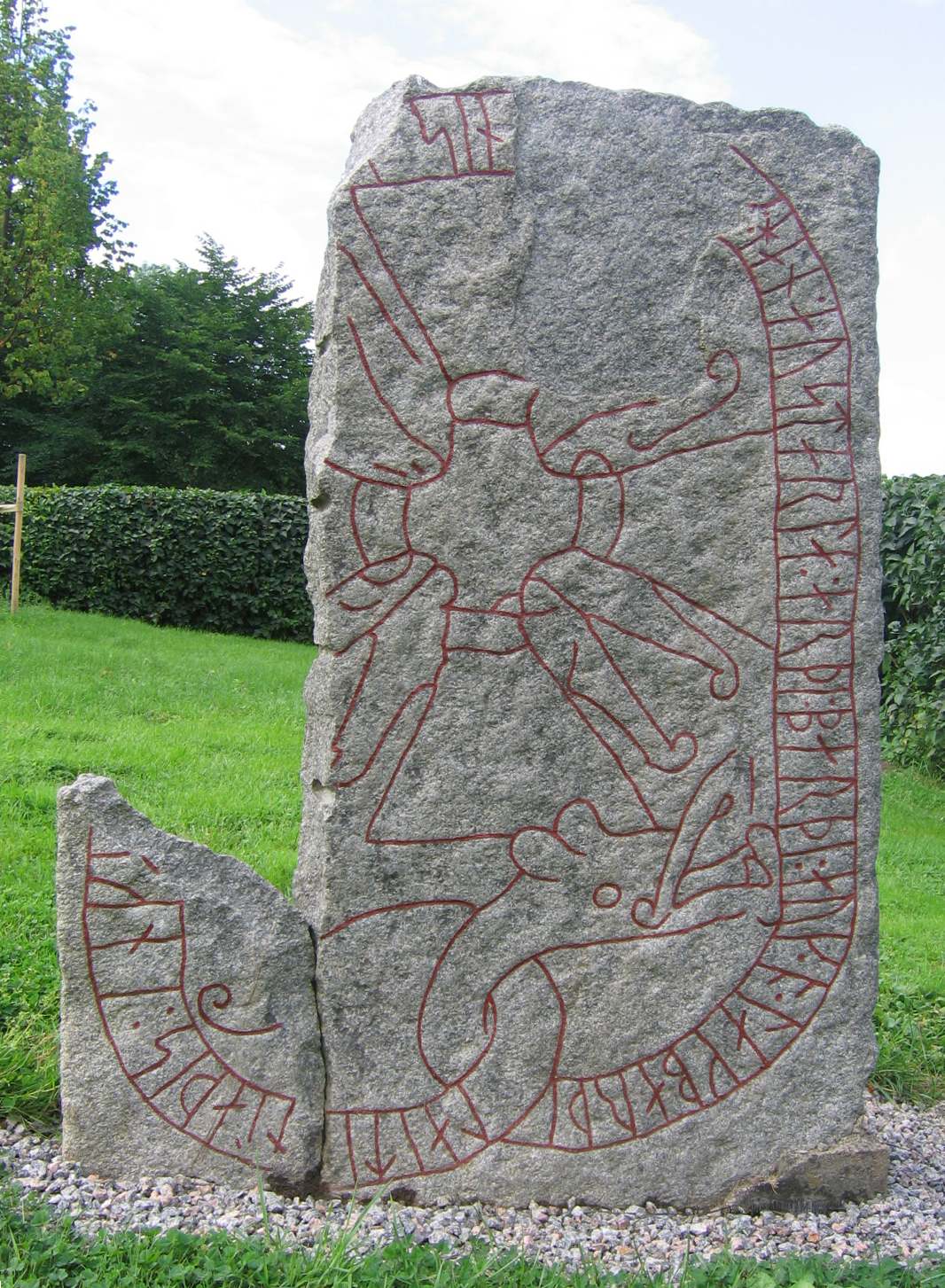Although, on the runestones, the location of the death of the warriors was linguistically translated as "Lombardy," it appears that they actually died fighting in one of the two southern Italian regions of Spoleto and Benevento under Byzantine service. Those two former southern duchies of the Langobards did continue on after Charlemagne destroyed the Langbard Kingdom. This would completely change the historical context of these runestones.
From Wikipedia's "Italy runestones" page:
"The Italy Runestones are three or four Varangian Runestones from 11th century Sweden that talk of warriors who died in Langbarðaland ("Land of the Lombards"), the Old Norse name for Italy. On these rune stones it is southern Italy that is referred to (Langobardia), but the Rundata project renders it rather anachronistically as Lombardy.
"The rune stones are engraved in Old Norse with the Younger Futhark, and two of them are found in Uppland and one or two in Södermanland.
"The memorials are probably raised in memory of members of the Varangian Guard, the elite guard of the Byzantine Emperor, and they probably died while fighting in southern Italy against Normans or Muslims. Many of their brothers-in-arms are remembered on the 28 Greece Runestones most of which are found in the same part of Sweden.
"The young men who applied for a position in the Varangian guard were not uncouth roughnecks, as in the traditional stereotype, but instead, it appears that they were usually fit and well-raised young warriors who were skilled in weapons. They were the kind of warriors who were welcome as the elite troops of the Byzantine Emperor, and who the rulers of Kievan Rus' requested from Scandinavia when they were under threat."
 From Wikipedia's "Varangians" page:
From Wikipedia's "Varangians" page:
"Varangian Guard
"Basil II's distrust of the native Byzantine guardsmen, whose loyalties often shifted with fatal consequences, as well as the proven loyalty of the Varangians, led him to employ them as his personal bodyguards. This new force became known as the Varangian Guard. Over the years, new recruits from Sweden, Denmark, and Norway kept a predominantly Scandinavian cast to the organization until the late 11th century. So many Scandinavians left to enlist in the guard that a medieval Swedish law from Västergötland stated that no one could inherit while staying in "Greece"—the then Scandinavian term for the Byzantine Empire.
"In the eleventh century, there were also two other European courts that recruited Scandinavians: Kievan Rus' c. 980–1060 and London 1018–1066. Steven Runciman, in The History of the Crusades, noted that by the time of the Emperor Alexios Komnenos, the Byzantine Varangian Guard was largely recruited from Anglo-Saxons and "others who had suffered at the hands of the Vikings and their cousins the Normans". The Anglo-Saxons and other Germanic peoples shared with the Vikings a tradition of faithful (to death if necessary) oath-bound service, and after the Norman Conquest of England there were many fighting men who had lost their lands and former masters and looked for a living elsewhere."
.

No comments:
Post a Comment